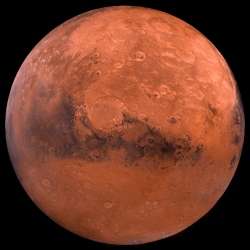
NASA has tested the air-cleaning and oxygen-producing capabilities of plants for decades, and now researchers are backing up biology with a bit of futuristic plant-growing architecture. They’ve teamed up with NASA scientists to design an inflatable greenhouse that’ll be more effective at helping astronauts cultivate veggies and produce oxygen in a place like Mars.
This is not your grandma’s conservatory. The prototype modules, a long cylinder measuring 18 feet long and 7 feet in diameter, are designed to help create an artificial ecosystem with plants feeding off the carbon dioxide exhaled by astronauts and astronauts breathing in the oxygen from the plants.
Its curved metal frame supports an inflatable membrane. Because of space radiation, the greenhouse would likely have to be buried under the surface of the planet or moon it is built on. Specialized LED lights have been installed along the interior of the frame, but a fiber optic system could also be used to bring concentrated natural light into the space for plants. Additionally, the space was designed to be largely self-sustaining, recycling its own water and waste while relying on few resources available on-site.
"We’re mimicking what the plants would have if they were on Earth and make use of these processes for life support," Dr. Gene Giacomelli, director of the Controlled Environment Agriculture Center at the University of Arizona, told NASA.
"The entire system of the lunar greenhouse does represent, in a small way, the biological systems that are here on Earth."
